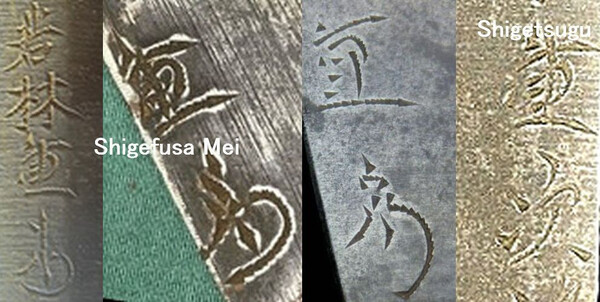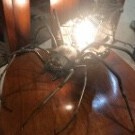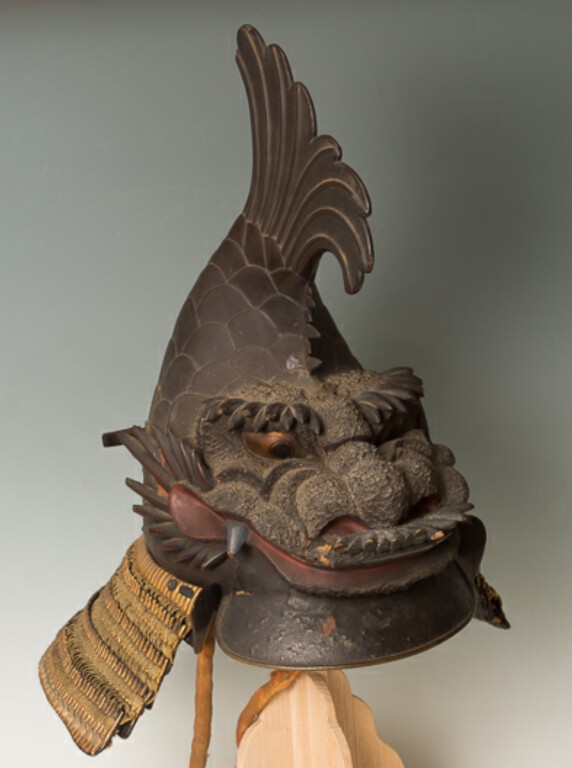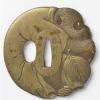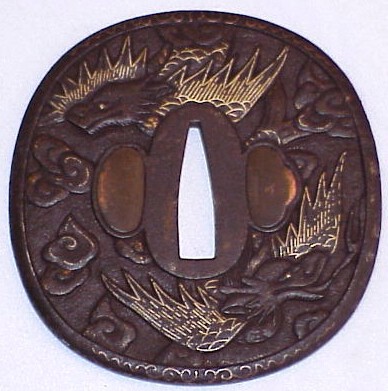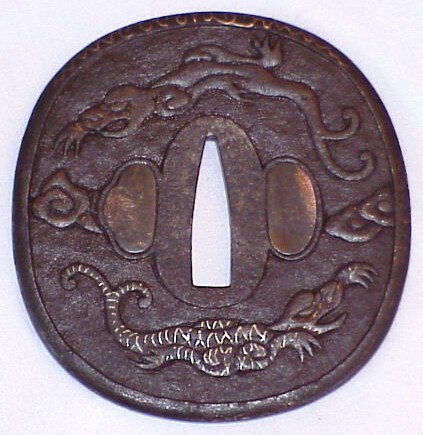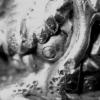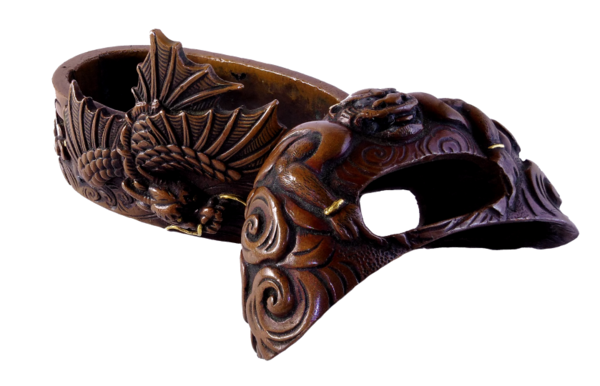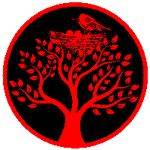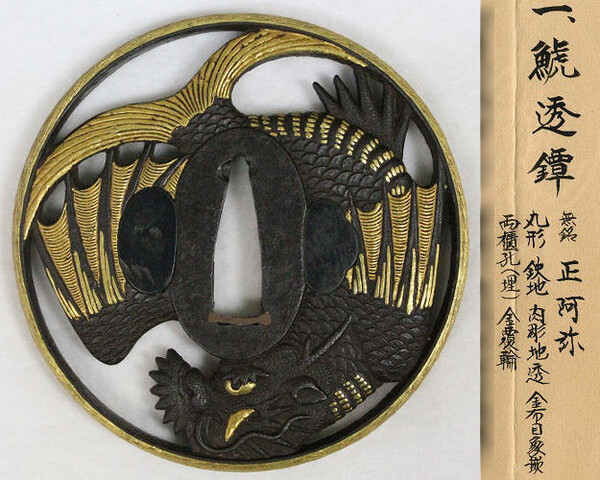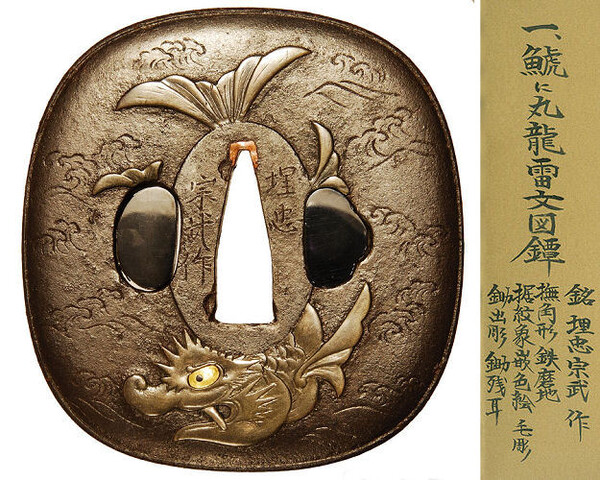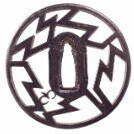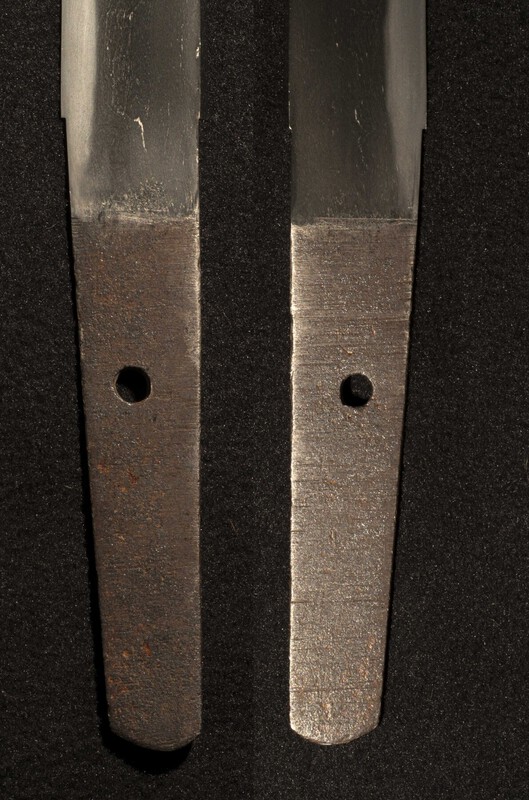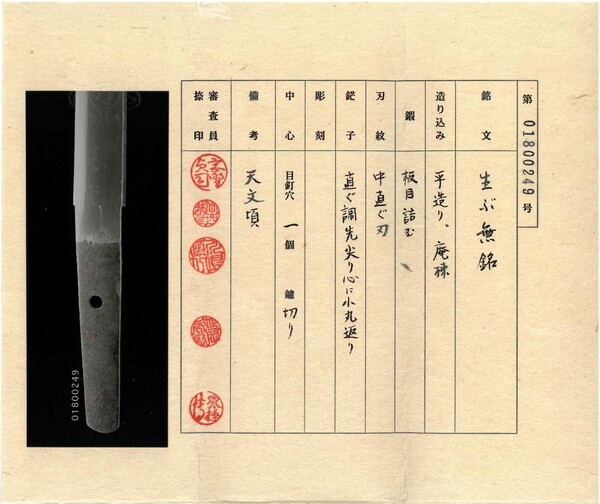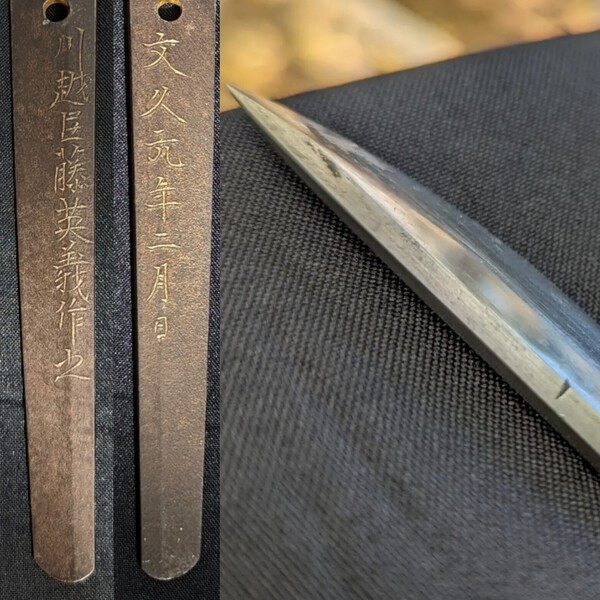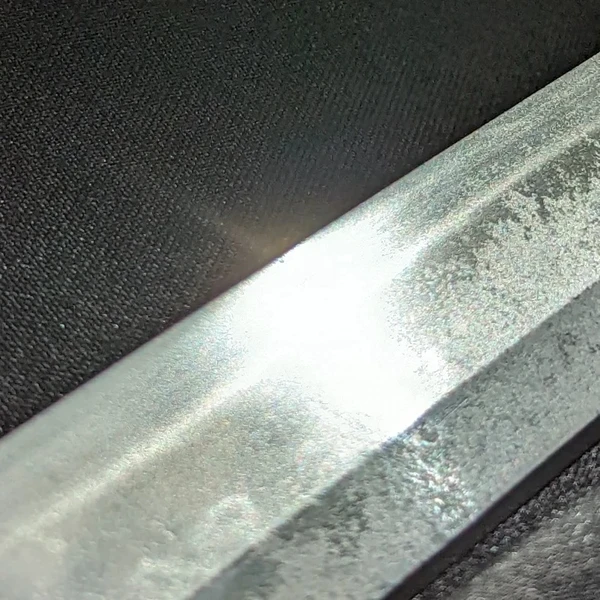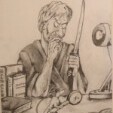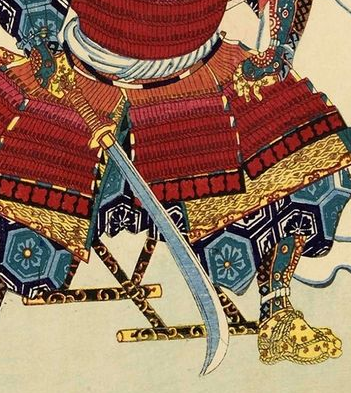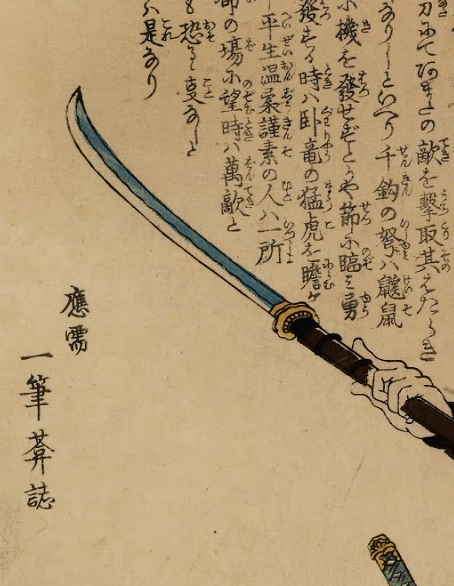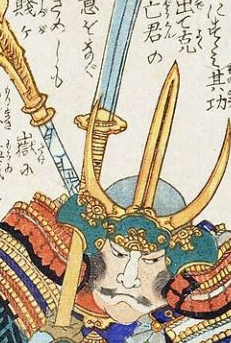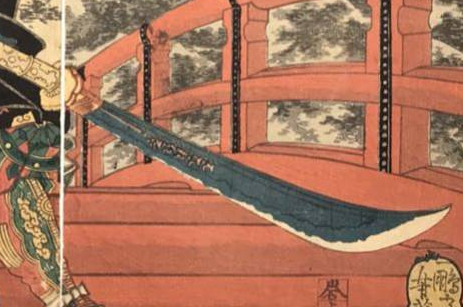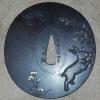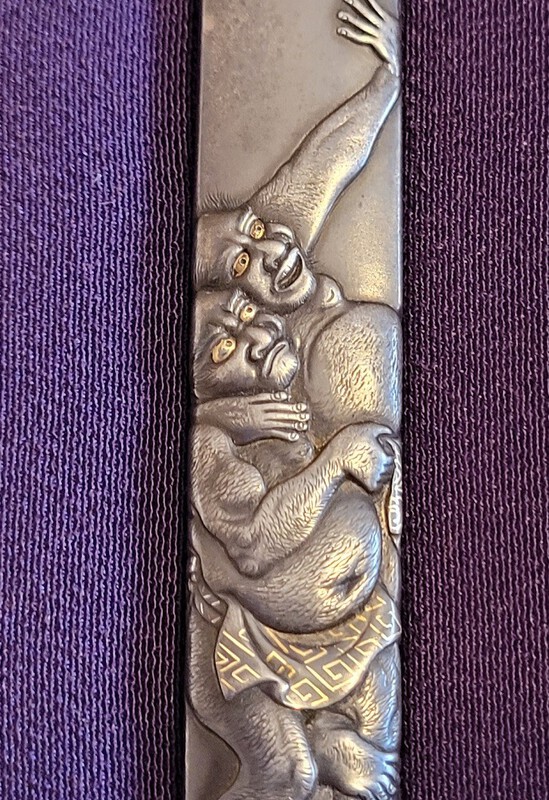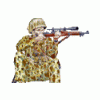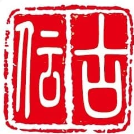Leaderboard
Popular Content
Showing content with the highest reputation on 02/10/2022 in all areas
-
Here's the full story of Shigefusa versus Shigetsugu By Nick Komiya I finally read the full thread in the Nihonto Message Board and now understand that the question was not merely how to read the Mei on the sword, but to untangle the jumbled use of the names Shigefusa 重房 and Shigetsugu 重次. I already explained that Shigetsugu was a member of the offshoot line of the Shigefusa line, but the story I gave you was a bit simplified, so I’ll now give you the full story. Wakabayashi Inosuke, the founder of the Shigefusa mei, had a son named Daisuke 大助, and Daisuke had a daughter named Sato and a son named Daihachi 大八, but Daisuke died when Daihachi was still only 14, thus too young to carry on the artisan name of Shigefusa. At the time of this family crisis, the Wakabayashi family had an apprentice named Morizō 守蔵 (I think the family name was Nakamura), who was already a fully trained smith, but who was there to learn methods of other schools. So, the Wakabayashi family asked Morizō to marry Sato and also to train the young Daihachi. Thus, Morizō took on the Wakabayashi 若林 name. Around 1914, when Daihachi was fully capable of carrying on the Shigefusa name, Morizō considered his duty for the Wakabayashi family done and moved to Tochigi Prefecture 栃木県 as an offshoot of the Wakabayashi family. But again in 1926, another crisis arose when Daihachi at the height of his career, prematurely died at the age of 41, leaving behind a son Noboru, only 14 years old, once again too young to take over the family business. Asking Morizō to rejoin the main Wakabayashi line was considered, but at that time, he was already well past his prime at 60 years of age, so his 30-year-old son, Wakabayashi Shigetsugu was sent to Aizu 会津 to carry on the Shigefusa line instead. And finally, after Noboru, the son of the main Wakabayashi line had fully reached adulthood, in around 1937, Shigetsugu and his family of 5 moved to Manchuria to work for the South Manchuria Railway Company (SMR), where he launched the Kōa Isshin 興亞一心 swords. In 1941, the family returned to Japan and settled again in Aizu, where he was later accredited as Rikugun Jumei Tosho (army licensed sword smith). Shigetsugu had also signed his earlier commercial work as Shigefusa, but registered as Wakabayashi Shigetsugu in the RJT program. Even so, he made a good number of swords for the black market to be sold as antiques, in which he used the generations old mei of Shigefusa. Shigetsugu and his father Morizō, both had to stand in for the main branch of the Wakabayashi family, when the inheritor of the family name was too young to inherit the business. Thus, he probably saw himself as a “stand in” and refrained from using the Shigefusa name as a RJT smith.4 points
-
A further point for discussion: George wrote; > Blade needed finish polish. From my life's experience I opine there is NO such a thing as a 'finish polish', believing I understand what George means by this. Not even the occasionally vaunted 'needs finger stones only' stands up to scrutiny. OBSERVATION 1 Maybe 20 years ago a friend showed around his 'as found' near mint katana in impeccable polish, so much so most collectors looking at it might say it didn't need a polish. A polisher visiting from Japan was at the gathering and observed "Hmmm, the polish is fading - I would start on the second stone." No such thing as a finish polish here. OBSERVATION 2 A Togishi told me he had never polished a sword that he didn't need to first straighten before beginning the work. But that's an aside. A sword that may be thought to only need a 'finish polish' in the hands of a togishi may in fact first need shitaji, a foundation polish where the 'shape' needs re-setting due to past errors in polish. These can be very subtle and need the trained eyes of a properly qualified togishi to make the call. After shitajii comes the shiage, the finish polish. etc etc etc Regards, BaZZa.4 points
-
3 points
-
Chu Aoe signed Katana in process of polish then submission- Posted here maybe 2 yrs ago and recently (Promising but who knows but worth the gamble for $1800 eBay made offer to seller) Soden Bizen Tachi over 3 yrs ago was worth a shot for $2200 ebay auction- once again waiting to paper. Both blades were in WW2 Gunto fittings. Aoe was in leather covered Gunto saya with civilian tsuba and Tsuka pretty much destroyed owner made amateur attempt to wrap and then squeezed habaki onto blade with appeared to be pliers(beautiful pattern was engraved in Habaki😔). The Soden Bizen was in very good condition type 98 Gunto fittings with Silver Family Mon crest. Blade needed finish polish. Will post in the future if they paper if anyone cares to know 🤞3 points
-
John, the hada seems a newer / Shinto type hada to me and also the boshi straightish and shinogiji hada......Good patination on the nakago but that can be achieved. I had a blade with repatinated nakago and it had been done extremely well - one could not tell it was not Shinto patina but patina done 20 years ago.2 points
-
Rivkin wrote above: > Which is more than can be said for very many western properly trained polishers, unfortunately. I do not take exception to anything Rivkin said, However, I should point out for those newer to the Board that our resident Australian togishi Andrew Ickeringill is properly trained and credentialed. See his website and Facebook pages: http://touken-togishi.com/ https://www.facebook.com/toukentogishi And on our own NMB see this thread: https://www.militaria.co.za/nmb/topic/11751-2013-nbsk-competition-results/#comment-121567 And while polish is being discussed this thread is a timely re-read: https://www.militaria.co.za/nmb/topic/35486-a-word-about-amateur-polishing/#comment-367040 BaZZa. aka Barry Thomas.2 points
-
Yes. After reading the whole discussion on that one, it seems likely that Richard Fuller's commentary about a post-war maker putting that kind out there. Just for future reference, though, the sword was surrendered in Bangkok, just in case others like it, from the same area, show up in the future!2 points
-
I have collected several images of Shiachi 'dragon-fish' guards - there would appear to be two types of this design. 1. with pearl above the mouth. 2. pearl in the mouth. From what I have seen those with the pearl above the mouth are likely cast copies or modern fakes. There may be exceptions. Shiachi should not be confused with Shiachihoko, Shiachihoko have the head of a tiger not a dragon or dragon-fish.2 points
-
2 points
-
2 points
-
2 points
-
2 points
-
2 points
-
*if there exists a thread regarding this topic, please let me know and I will share there* Dear Friends and Collectors, I have finally arrived back in Japan and am spending some quiet days in my quarantine hotel. It was the first time for me carry three Japanese swords to Japan and I would like to share my experience for those of you who are interested. I used ANA to fly from FRA to HND which has its advantages not only because they offer direct flights, but also because their Japanese staff in Frankfurt did call the Japanese customs and informed them of someone bringing swords. I have my reasonable doubts that this phone call made any difference, and you may judge for yourself after you read the rest. Well, I am happy if anyone could share their experience with other airlines or even with 1- or more-stop flights. At the check-in I told the staff I would carry three Japanese swords. They would then ask me if I had registered that transport in advance, which I denied. Furthermore, they would make some calls as to which category they would have to put the swords into, weapon or antique. I do assume they used the former. This time at least they did not call the police which last time ended in me pulling out a katana in front of a queue of 100 Turkish airline tourists. However, this time the ANA staff said he needed to take the magnet test. So, after I stripped the Nakago naked, he took his iPad case and held its magnetic clip against it. What I really appreciate is, that no additional costs occurred, which might be due to my star alliance status though. Any experience on that is very welcome. Arriving in Japan I filled out the Arrival card and customs declaration as shown below. I have to admit it is a slightly odd feeling to answer a question with ‘yes’ that starts with ‘Do you presently have in your possession narcotics, marijuana opium, stimulants, or other controlled substance…’. Even though double checked at the immigration control, the officers did not mind that and didn’t even care to ask me what kind of substances I had in possession. Due to the special Covid entry procedures - the details of which I will spare you here as they fill another book – my luggage and swords were already waiting for me next to the conveyor belt. After I got the tail wag approval from the detection dog I headed for the customs declaration. Showing the officer the sword case and my declaration, he guided me to the special room where the registration would happen. There were around six customs officers on duty at the time and after I told the first one, I had three Japanese swords to declare, every single one of them was up on their feet. Some starting to take out books to look for answers, some asking me the usual why, what, how questions. There was a short moment of confusion when one of them proclaimed to everyone that I need to show them the certificates. Even though I was quite sure that no certificate is needed to import a sword into Japan, my sweat started to run when I mumbled something about the copies of the NBTHK papers which I held for two of the blades. Luckily the smarty pants himself had no real clue and before he could cause a bigger scene, some of his colleagues somehow found the right answer in a book and called the police. A police officer arrived to whom I explained that I am carrying three swords for polishing. Luckily I had translated everything into Japanese and printed it out on a piece of paper, so I did not have to completely rely on my Japanese skills at 4 am in the morning (departure time zone). After a friendly talk with the officer, he called in the experts and some minutes later a lady my age and an older guy arrived, and I finally knew that we were on the right track. Meanwhile the story of a foreigner in sweatpants carrying three Japanese swords must have made its round through Haneda airport as the number of officers in the room had trippled already. While the experts were taking pictures of the swords, I had the chance of practicing my Japanese by telling the same story repeatedly to several of the bystanders. I think I even earned some quiet respect when they saw me freeing the Nakago from the hilt by hitting my wrist with my fist. After quite a lengthy process which involved not only copying my passport and residence card but also taking a picture of my face – at least I didn’t have to hold up a number – they gave me a ‘hikiwatashisho’, the final document I need to carry the swords until they are officially registered and receive a ‘torokusho’. After the two experts had left, the customs officers asked me to take copies of all my documents as well after which they finally let me go. The whole process took a bit more than one hour, and I had missed the bus to the quarantine hotel, so they brought me back in to the customs area where I should wait. After everything it didn’t surprise me much that one of the customs officers asked me to open the sword case again, as he would have to count the swords. I assume he missed the chance to take a glimpse earlier as he might have stood behind his superiors earlier too shy to come forth, so I let him have his way. Oh, and before I forget, no magnet test was taken this time, I assume they simply missed it due to all the noise. Finally, I had successfully imported the swords to Japan, no prior registration needed, no import taxes, no bigger issues. As a small bonus I could enjoy a private bus ride to the prince hotel in Shinagawa where I spent my six days of quarantine with a view of a third of mount Fuji. Paul www.Tsuba.info1 point
-
1 point
-
If you know of any Great Swords that came out of the wood work in the last 50 years,do tell. It would be a welcomed edition to our hobby, knowing about them. Collectors in Japan may know best. Collectors of the S.F. Chicago, Florida Sword Shows can add light to the list.1 point
-
Having found a very interesting katana at an antique show this past weekend led me to this article below on the smith by Markus. It's pretty wonderful to be able to learn so much about a swordsmith's life and career, and greatly enrichens the experience of studying his work. https://markussesko.com/2013/05/13/from-the-life-of-fujieda-taro-teruyoshi/1 point
-
Always great to read Nick Komiya's research. He's a real asset to the sword community. If I could just steal him from that forum..... Thanks Nick, appreciate the clarity.1 point
-
1 point
-
Wow, love to hear a good story like that - and thanks for helping to untangle this knot. Thanks to Nick too for the very interesting background. It often strikes me quickly we can lose some of these historical details if we don't pursue them. All of these WW2 smiths who were alive until the 80s or 90s, and yet we (seemingly) have so little information on them. And now Trystan's posts regarding the Shigefusa lineage make much more sense to me now also.1 point
-
Hi John. I will give them a bell. But I've received a message from parcelforce telling me that they are forwarding my paperwork to clearance, and the sword will be cleared soon. So what I wrote to them seems to have worked. Wel wait and see. It seems that this is happening more often in the UK. Regards1 point
-
If I didn’t just by tons of swords in the last few weeks I would have bought this when you put it up next month or so if it’s still around maybe. I’m sure it will be gone soon1 point
-
Thank you! It was what drew me to the sword in the first place. That and I have always been a fan of Naminohira due to their unpretentiousness (is that a word? It is now lol) and stark beauty.1 point
-
Here are two nice possibilities that are up for sale currently in Japan. 3,2M Yen - Nobukuni (Shigekane) 1717 & Moritsugu 1708 : https://www.sanmei.com/contents/media/K6997_6998_S2226_PUP_E.html 2,0M Yen - Kiyohide 1848 & 1849 : https://www.touken-matsumoto.jp/ja/product/shousai/DS-0007 This is not my field of collecting but I feel that package from Matsumoto is very nice.1 point
-
Mumei sword attributed to 兼先 - Kanesaki. Kanesaki smiths worked in Mino province around late Muromachi to early Edo period. There were lots of various Kanesaki smiths during Edo period but I would think mumei attribution to Kanesaki without any added on info would refer to late Muromachi and Mino.1 point
-
Mark, I may be misremembering but the smith you mention is a shinto smith working in the Edo Ishido school. These smiths were attempting to emulate ichimonji workmanship and the hamon typically included choji midare and often there was some utsuri. The hada on your piece looks to be good quality but I cant see any obvious Ishido indicators. However this is not really my area of study so I am possibly missing something.1 point
-
1 point
-
Hi George, after a careful look at your SUGATA photo, I feel that your blade is KOSHI-ZORI. My impression is that It is a nice blade, but with only photos as reference, an assessment is not easy. Looking at the very even NAKAGO patination and your close-up photos of the MEKUGI-ANA (not meguki-ana), I would not exclude the possibility of a well-made SHIN SHINTO UTSUSHI.1 point
-
I guess I'm the one waving the flag for an older blade. So here goes with some arguments in that direction: the ana being drilled could be as a result of them not being the original ana. In the pictures where George is holding the blade I think the patina is fine; where in the others it's the light seems to create a red look to it that might suggest red rust. My feeling is that this is an o suriage blade that started life as a katana as the hi goes all the way through the tang. I think if a shin shinto smith was trying to create an utsushi mono he would have gone for a deeper sori. Looking at the sugata it looks like the sori is beginning to deepen nearer the tang (though that impression might be created by the thinner nakago) but is perhaps not that far off for the end portion of a long blade and there were of course some older blades that lacked sori. Am I the only one seeing utsuri? That ought to point away from a shin shinto blade (though perhaps not definitively) and I'm with Jimmy that the kasane seems too narrow for a newer blade. What might let this argument down is that the hada is flawless and one would normally expect to find a few kitae ware in a koto blade. All good stuff though and kudos to George for starting the thread.1 point
-
1 point
-
https://en.wikipedia.org/wiki/Shachihoko Piers I don't know how the design could be confused with an Orca, the killer whale is a mammal and does not have scales. Not that these facts got in the way of early European explorers. I'll go with your second definition of a mythical creature. This 'Sea Pig' or 'Sea Swine' lived in the North Sea on Olaus Magnus’s 1539 'Carta Marina'. There are some striking similarities to the Shachi [or is it Shiachi?] I know of only one vertebrate that has more than two eyes [the Tuatara of N.Z.] I can't imagine what the three eyes on the animals flanks [both sides?] would be used for, or are they something 'different'?. Watch out this version can come out of the water!1 point
-
The 0.66 on the kasane though is a bit thin for a shinshinto, even if it were polished through, at 0.66 i'd expect a shinshinto to show ware of some sort. The mihaba to saki haba ratio also seems off for a shinshinto. Hmmm nice conundrum.1 point
-
鯱 (魚 fish + 虎 tiger Kanji) can be read either Shachi or Shachihoko. Meanings: 1. Killer whale, orca. (Shachi) 2. A mythical creature, the symbol sometimes used for warding off disasters.1 point
-
Most higher end dealers in Japan are trained polishers or in the very least have extensive training in polishing. Yes, most sub 300,000 yen blades are polished by dealers or their similarly trained partners. It typically costs around 40,000-70,000 yen for a daito to have this level of polish. The quality varies, in some cases there is so much keisho one can look at a sword only with very good light and very steep angles. Some are certainly no worse compared to trained western polishers. I don't think anyone makes a secret out of it. There is sub 70,000 basic polish, then there is 110-150,000 polish which is more "professional" and then you jump all the way to 500,000 yen. In my experience you can ask them to guarantee the blade will not be rejected from papers based on being in improper polish. Which is more than can be said for very many western properly trained polishers, unfortunately.1 point
-
When I showed the tang on another forum years ago they said it was a gunsui military blade by Kane Kune or Kane Kuni but they didn't reply on the era of the fittings. I still have the sword and will dig it out of the safe latter and take photos of the tang. Thank you1 point
-
1 point
-
I have a feeling that, this could be a Shinshinto copy. I have come to this opinion because, 1. the Hada. 2. the Sugata. and 3. the placement of the Mekugi ana ( which also appear to be drilled).1 point
-
Hi Bruce, the only way to contact them would be to have a Yahoo.jp auction account. The english buying services don't allow for contact with the seller, though you could try asking one of the customer service people to message them.1 point
-
No Jean I think a tsuba on a naginata served the same purpose as on a sword - stopping the hand from running up the blade. There is still little to no evidence tsuba were intended to stop an opponents blade. Someone please show me the thousands of guards with cut marks please. Half a dozen examples would merely suggest incidental damage. The tsuba was not a parrying guard as on European weapons, the Japanese sword was not used tête-à-tête even though it is shown in 'spaghetti" samurai movies that way. It comes back to practicality, if a guard was to stop an opponents blade why use leather, copper, shakudo, ivory or maki-e? On a side note can anyone tell me the cost difference between producing a plain iron guard compared to copper, yamagane, shibuichi etc? Same use as on a Guandoa.1 point
-
Steve I posted that sword in this tread about a week ago. Here is root of 重房 1st Generation 重房 若林安右衛門 2nd Generation 重房 若林猪之吉,安右衛門‘s second son.He and his older brother 若林安左衛門 both are using 重房 name. 3rd Generation 重房 若林大助,若林猪之吉‘s son。 4th Generation 重房 守藏 ,若林大助’s student and son in-law. 5th Generation 重房 若林大八,若林大助‘s son. 6th Generation 重房 若林重次,守藏’s son。 7th Generation 重房 若林升,若林大八‘s son,重次’s nephew. 若林重次 is 6th Generation 重房1 point
-
If possible I'd suggest adding the original resolution photos. The ones that open in a new tab when clicking the popup gallery are smaller than what I'm used to from Aoi. Nice package in either case.1 point
-
1 point
-
1 point
-
Kozuka by Furukawa Jochin. Jochin was the son of Genchin of the Furukawa School, often just grouped within Yokoya works. Genchin was taught by the great Somin, and Furukawa works are often top tier examples of katakiri and katakiri bori work styles. Kozuka depicts two sumo wrestlers in a contest. One is about to execute the kawazu-gake technique takedown. Deep colored shibuichi, great tones, and super fine details (body hair, finger nails, much more). Super excited about this kozuka and will study for some time:1 point
-
I was happy with my first unboxing, was simply a showa sword and the second one well...i got a refund on that :D1 point
-
Markus helped me with a proper English translation of the sayagaki. It reads as:1 point
-
1 point
-
I think that you should wait until after the juyo shinsa to get a sayagaki. The fact that it got juyo can be part of the sayagaki.1 point
-
looks like 需應佐々木重輔 which should mean "on request of Sasaki Shigesuke (or Jusuke)" Seems he liked his swords being custom made https://jref.com/threads/request-for-help-translating-kanji.251744/ https://www.militaria.co.za/nmb/topic/33601-help-needed-with-mei/1 point
-
I started going to the Orlando show about 5-6 years ago. The very first time I met Bob he treated me like he had known me for years and was always there to help me, and everyone else with any of our needs. Bob became a True Friend to me and he will be greatly missed by me and anyone that had the pleasure to meet him. You will never be forgotten Bob MikeR1 point





